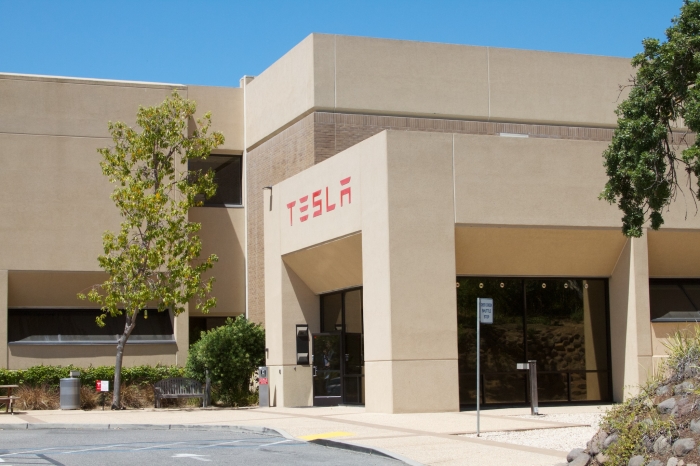Tesla Motors Inc. has been painting a pretty good picture with a string of positive news lately. CEO Elon Musk made a number of announcements via Twitter. In particular, the tweets said that the first Model X will be handed over on September 29th and Model 3 will start taking preorders from next March. Also, there have been reports about the new 90-kWh battery for the Model S that enables it to go into "ludicrous" mode, accelerating from 0-60 mph in less than 3 seconds.
The Model X Signature series will cost between $132,000 and $144,000, while Model 3, the cheaper mass-market vehicle, is priced at $35,000.
Meanwhile, the optimism around Tesla’s future growth led to a rebound in its share price from the low $200s at the beginning of this year to the $240 range.
However, the first orders of the Model X seem to be entangled in a number of problems. In 2012, the company announced that the Model X would be launched in 2013. But due to delayed production, it was supposed to begin delivery in April 2015. Now, finally a few deliveries will be made by the end of this month.
A recent report by SeekingAlpha, points out, “The Tesla bubble is bursting because of a myriad of problems, low oil prices, and broader market challenges.”
Elaborating the various factors, the report said that profitability is one of the main problems that Tesla faces. Earnings per share continue to decline and will remain negative this year. Moreover, Tesla's financial numbers for second quarter remain disappointing: “Q2 non-GAAP net loss was $61 million, or a loss of $0.48 per basic share based on 126.7 million basic shares, while our Q2 GAAP net loss was $184 million or a loss of $1.45 per basic share.”
The production delays in delivering Model X by 3 years have raised questions about the company’s credibility. Customers remain wary whether or not the Model 3 will actually start rolling out in 2017.
Yet another problem is the falling global oil prices, which could reduce the demand for electric vehicles. If oil stays below $50 for at least the foreseeable, future consumer demand for more expensive EV cars may shrink, it said.
Also, Tesla has been spending its funds at an alarming rate. The report noted, “During the first half of the year, it spent $1.1 billion, with about $300 million in negative operating cash flow. This August, Tesla issued a little more than 3 million shares, and net proceeds from the offering were around $738.3 million.”
The company has approximately 130 million shares on the market and if need arises it may potentially offer more in the future. If for some reason the stock begins to fall and margin calls go out on the basis of borrowed funds, Tesla's share price would plummet faster than ever, it added.
The report concluded stating, “Tesla's stock price remains in ludicrous mode, but not for long. Although Tesla bulls continue to pump the stock filled with irrational exuberance, the reality on the ground is that Tesla faces a myriad of problems, a sustained period of low oil prices, and broader market challenges. All of this makes it appear that the Tesla bubble is finally bursting.”
Tesla faces plethora of problems

Tesla Visit 3 (WIndell Oskay_Flikr)
Thursday, September 10, 2015 12:28 PM UTC
Editor's Picks
- Market Data
Most Popular



 WuXi Biologics Clinches Eighth CDMO Leadership Award with Breakthroughs in Biologics Manufacturing
WuXi Biologics Clinches Eighth CDMO Leadership Award with Breakthroughs in Biologics Manufacturing  CoreWeave Slashes IPO Size and Price Amid Investor Caution Despite Nvidia Backing
CoreWeave Slashes IPO Size and Price Amid Investor Caution Despite Nvidia Backing  Toyota Delays EV Battery Plant in Japan Amid Weak Demand and High Costs
Toyota Delays EV Battery Plant in Japan Amid Weak Demand and High Costs  BYD to Launch 500 Ultra-Fast EV Charging Stations in April, Doubling Tesla’s Speed
BYD to Launch 500 Ultra-Fast EV Charging Stations in April, Doubling Tesla’s Speed  Intel CEO Lip-Bu Tan Outlines Bold Turnaround Strategy at IntelVision 2025
Intel CEO Lip-Bu Tan Outlines Bold Turnaround Strategy at IntelVision 2025  Microsoft Cancels Major Data Center Leases, AI Stocks Tumble Amid Capacity Shift
Microsoft Cancels Major Data Center Leases, AI Stocks Tumble Amid Capacity Shift  Malaysia Faces U.S. Pressure to Tighten Chip Regulations Amid AI Tensions with China
Malaysia Faces U.S. Pressure to Tighten Chip Regulations Amid AI Tensions with China  SK Hynix Sees Chip Order Surge Ahead of Possible U.S. Tariffs, Eyes AI Memory Boom
SK Hynix Sees Chip Order Surge Ahead of Possible U.S. Tariffs, Eyes AI Memory Boom  Nvidia Faces New Hurdles in China as Energy Rules Threaten AI Chip Sales
Nvidia Faces New Hurdles in China as Energy Rules Threaten AI Chip Sales  Tesla to Produce 5,000 Optimus Robots in 2024 Amid EV Market Challenges
Tesla to Produce 5,000 Optimus Robots in 2024 Amid EV Market Challenges  Nintendo Switch 2 Launches June 5 at $449.99 with Major Upgrades
Nintendo Switch 2 Launches June 5 at $449.99 with Major Upgrades  Ant Group Taps Chinese Chips to Cut AI Training Costs by 20%
Ant Group Taps Chinese Chips to Cut AI Training Costs by 20%  Apple and Elon Musk Clash Over Satellite Connectivity as Starlink Faces New Rival
Apple and Elon Musk Clash Over Satellite Connectivity as Starlink Faces New Rival  Xiaomi Raises $5.5B to Supercharge EV and AI Ambitions
Xiaomi Raises $5.5B to Supercharge EV and AI Ambitions  North Korea Unveils AI Suicide Drones and Airborne Radar in Military Upgrade
North Korea Unveils AI Suicide Drones and Airborne Radar in Military Upgrade  FuriosaAI Rejects $800M Meta Takeover, Aims to Rival NVIDIA in AI Chip Race
FuriosaAI Rejects $800M Meta Takeover, Aims to Rival NVIDIA in AI Chip Race  Elon Musk Merges xAI with X in $113B Deal to Build AI-Powered Tech Giant
Elon Musk Merges xAI with X in $113B Deal to Build AI-Powered Tech Giant 




























